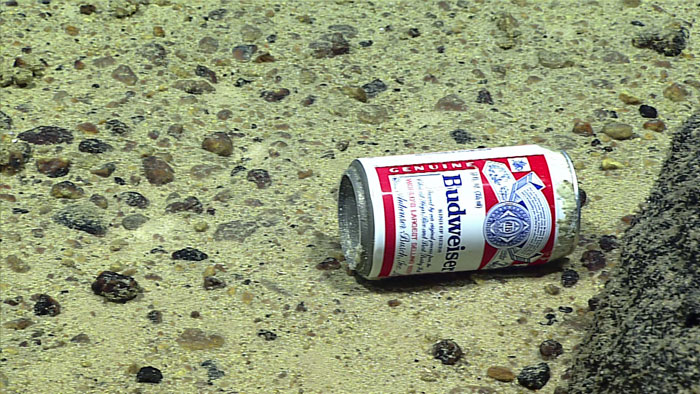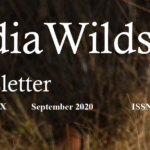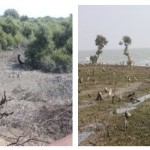IndiaWilds Newsletter Vol. 12 Issue X
ISSN 2394 – 6946
Climate Change: Time to take Corporates to task
Homo sapiens as a species have been causing irreversible change to the Earth’s ecology and as a consequence devastating impacts of Climate Change is now shaking us up. Every month we see a record high global average ambient temperature. The vast permafrost covered landscape in the arctic is melting. This is giving rise to higher sea levels. It is also exposing viruses hidden deep below the ice which has the potential to get transmitted to people. Intense and prolonged heatwaves are giving rise to immense suffering and deaths. These heatwaves are also fueling forest fires. Other extreme weather events like storms, landslides, flooding have also become increasingly common. Except for certain lobbies who are purposefully denying Climate Change due to vested interests the world at large is now familiar with the fact that Climate Change is upon us.
Unfortunately, Governments as well as corporates are now using the words Climate Change as a mere jargon. They are using it simply as a good to talk about thing for the sake of corporate image. Not many corporates have actually gone ahead and taken steps to ensure that their actions don’t harm the environment and ecology. They are justifying their lack of action by saying that it is impossible to immediately act as some of the actions can create immediate challenges for their business.
Plastic Packaging:
The sight of plastic packaging everywhere is making people ask whether Corporates are serious about saving Planet Earth? We have already been numbed by thousands of visuals about our oceans being inundated with plastics. However, despite campaigns about banning plastics in general and single use plastics in particular, not much has happened on the ground. We still find corporates generating tons of plastics for their packaging. No action has been taken to replace the plastics or takeback the plastics from the consumer.
With most of the buying and selling going online The Covid19 induced lockdown has resulted in a lot of buying shifting from physical stores to online, with giants like amazon being the preferred choice. Unfortunately, consumers are saddled with lot of these plastic packaging and all of those are promptly thrown away. Given the abysmal state of garbage collection by the municipal authorities, most of these plastics find their way into dumping sites. The plastics disintegrate and become more lethal as less than 0.5mm sized plastic particles are easily ingested by smaller organisms and fish and they come into our blood stream. A study even found microplastics in salt and water and beer.

Beer Can found in the 3780 meters deep at Enigma Seamount in Mariana Trench. Photograph: NOOA office of Ocean Exploration
Designed to Fail:
Today we use many electronic gadgets like washing machines, TV, refrigerator apart from smaller sized items like mobiles and laptops. It appears that these items have been designed to fail soon as washing machines, mixers and TVs of old used to work for couple of decades. However, these days within a few years people find their new equipment malfunction. The cost of repair is very high and there is no guarantee of the repaired product working for long so people are forced to spend a bit more and buy a new one.
It also becomes very difficult for people to dispose off these big items due to their bulk. They end up being stripped by people who want to recycle some of the precious metals from these electronic items and the rest are dumped in the landfills. The amount of pollution this causes is huge. Unfortunately, despite years of discussions there is no functioning take back policy. Companies are not responsible enough to take back their items and safely dispose it off. So companies first create products that will fail soon and become waste. And then by not taking back the waste they ensure that the discard goes into landfill. This needs to stop.
Environmental cost:
A lot of corporates don’t care about the environmental costs of their actions. It is well known that the Environmental Impact Assessment process in India is a joke. There are agencies who do the EIA without even visiting the place. People who have no idea about wildlife and ecology visit ecologically fragile places and certify that there is no wildlife in a place. Many areas are given to corporates to set up their facilities and once a company comes up many ancillary units follow suit and the entire place is transformed. Too often the authorities purposefully allow diversion of forest land for corporates and list down some rudimentary conditions to be met by the project proponent. Unfortunately, even those conditions are never monitored and there is no monitoring by the authorities. Organisations don’t care as they simply view this license process as a necessary evil and never take responsibility for the damage done to the environment. For most of the corporates cost is the first criteria and hence they don’t want to voluntarily move away when the locals and environmental activists protest. Corporates generally don’t care to shift even if any other suitable place is available.
Corporates look for tax breaks from different State Governments. So in the past we have seen various State Governments announce 10 year tax holidays to attract investment. In a hilly state, many manufacturing companies had moved in to setup factories to avail the tax holiday. The demand for power went up and the Government moved in to exploit hydropower as it is in major Himalayan river basin. Many tributaries of a Himalayan river was dammed. The construction phase resulted in severe ecological challenges. Debris were dumped in rivers and workers clear-felled vegetation in hills to setup houses. The ecologically fragile Himalayas saw rapid urbanization.
Corporates simply are not aware about these massive impacts of their action. While doing due diligence before setting up a factory, corporates ask Government if there is power and water. Often the Government promises power and sets up hydro power units or thermal power units. No corporate ever thinks if the power they are going to get is from a new polluting power unit.
The environmental cost of the hydropower units is huge and Governments never do an Environment Impact Assessment on a river basin level. So you find every 6-7 kms a hydropower unit in a river and the free flowing river is killed. Often corporates don’t realise that they are setting up a chain reaction of events which are disastrous for the environment. Public memory is also short and no one asks why a corporate is buying power from a polluting unit.
It is very important to ask corporates about the source from where they are procuring power. Have you brought out a negative change in the landscape where you are operating? Force them to acknowledge that their actions have cause damage to the environment.
Ethics:
Government officers in their eagerness to help corporates at times allow some loopholes to be exploited. It is important for the corporates to say no to such exploitations of loopholes. However, that is only possible if the corporate as well as the individual who is taking the decision in the corporate has a strong value system. The prevailing lack of ethics in people is also a reflection of the society as too often people who have defrauded a system are celebrated for being rich.
In the past, many times I had been asked by European and American corporates about ethical challenges posed by Government officials. In some south east Asian countries there have been rampant demands for bribes. Many well known MNCs have fallen to it and had been investigated and got a bad name for succumbing to those unethical demands. So the way a corporate acts in situations is often guided by a few officials.
The challenge with corporates violating environmental norms and ethics is that corporates generally don’t have any strongly defined guidelines regarding how not to react to environmental violations. It is not drilled down to every employee that our every action has to be positive for the environment. Companies know that they need to earn money. Their prime motive is to make profit. Nature, environment, wildlife doesn’t figure in the priorities of corporates. Corporates don’t draw a line that if an action is impacting the health of our environment and hence on Planet Earth, then that action shouldn’t go ahead.
Today the earth is boiling due to Climate Crisis. Our planet earth is fast becoming unhabitable. It is time to take action as we are fast reaching the tipping point and our actions can’t be reversed later. Unfortunately, since the corporates won’t undertake actions on their own even when the earth is facing a climate crisis of massive proportions, it is time to put pressure on the corporates to own up to their actions.
This can be done in two ways. If consumers are vigilant then they can put pressure on the companies. And one easier and faster path is by putting pressure on investors to take the environmental violations and sustainability issues more seriously. A case in the point is the actions of Rio Tinto officials who knew the importance of ancient caves in Pilbara, Western Australia and still went on to destroy those. The aboriginal traditional owners had opposed the destruction of the Juukan George rock shelters but Rio Tinto officials went ahead and blasted those. After massive criticism of investors Rio Tinto chief quit ( https://www.bbc.com/news/world-australia-54112991 ). This should give confidence that Corporates will think twice before committing environmental violation. The challenge is putting sustained pressure over a period of time. That can only happen if more and more people become aware about the massive impact of Climate Change on us. Hence, let’s keep on spreading the word and raising awareness among people about the Climate Crisis.
Book Review: The State of Wildlife and Protected Areas in Maharashtra
Edited By Pankaj Shekhsaria
Conservation News:
Government committed to landscape restoration for Snow Leopard Conservation
Snow leopards are a highly endangered species. In India, the geographical range of Snow leopards encompasses a large part of the western Himalayas including the states and UTs of Jammu and Kashmir, Himachal Pradesh, Uttarakhand, Sikkim and Arunachal Pradesh. Protection of the snow leopard and its habitat would ensure protection of the major Himalayan rivers that support the teeming millions downstream. It would also ensure that the ecological balance is maintained in these fragile ecosystems. So to protect snow leopards and their habitat Government of India had launched the Project Snow Leopard (PSL) in 2009. The Government of India has identified the snow leopard as a flagship species for the high-altitude Himalayas.
Speaking at the International Snow Leopard Day 2020 through a virtual meeting, India’s Minister of State for Environment, Forest and Climate Change Shri Babul Supriyo said, Government is committed to landscape restoration for snow leopard habitat conservation, and implementing participatory landscape-based management plans involving local stakeholders. India has identified three large landscapes, namely, Hemis-Spiti across Ladakh and Himachal Pradesh; Nanda Devi – Gangotri in Uttarakhand; and Khangchendzonga – Tawang across Sikkim and Arunachal Pradesh for snow leopards. Shri Supriyo emphasised that states together with Government of India should resolve to bring up the population of snow leopards in India in the next five years.
The Project Snow Leopard (PSL) also encourages the States and UTs to adopt innovative strategies to resolve issues related to multi-stakeholder landscape management, human-wildlife conflicts, wildlife crime and trade in wildlife parts and products, capacity building, climate-smart energy solutions etc.
India is also party to the Global Snow Leopard and Ecosystem Protection (GSLEP) Programme since 2013. This multi-lateral programme comprises of 12 snow leopard range countries and they have developed national priorities and identified large landscapes to support viable populations of snow leopards. During the virtual meet community volunteer programme “Himal Sanrakshak” was launched by Shri Supriyo followed by the release of origami notebook based on the theme of combatting illegal trade in wildlife.
The Centre hosted the 4th Steering Committee of the GSLEP program in October 2019 at New Delhi. This meeting resulted in the “New Delhi Statement” of strengthening the resolve of the snow leopard range countries towards conservation of the mountain ecosystems of Central and South Asia.
First National Protocol was also launched last year on Snow Leopard Population Assessment which has been very useful for monitoring populations. In line with other projects, this initiative exclusively focuses on developing landscape-based management plans, habitat restoration plans, livelihoods improvement, mitigation of wildlife crime and illegal trade in wildlife, human-wildlife conflict mitigation strategies, improving awareness and communications strategies.
250 sq. kms around Radhanagri Wildlife sanctuary declared as ESZ
The Union Ministry for Environment, Forests and Climate Change (MoEF&CC) has notified 250.66 square kilometers around Radhanagri Wildlife Sanctuary as Eco-sensitive zone. The ESZ area is between 200m to 6 kms around the Radhangri WLS. This ESZ declaration will help as the ESZ area will act as a buffer and stop mining projects, stone quarrying and crushing and industries which are classified as Red category are prohibited from this area. Organic farming, agriculture, small scale industries and minor infrastructure work are however permitted in the ESZ. According to the National Wildlife Action Plan 2002-2016 ecosensitive zones act as vital corridors to ensure wildlife movement and stop an area from being isolated.
Notified in 1985 as a wildlife Sanctuary, Radhangri is spread over 351.16 square kilometer and helps in movement of various megafauna like tigers, elephants as well as other wildlife species between Maharashtra, Goa and Karnataka in the western ghats. Around 41 villages in Kolhapur and Sindhudurg districts come under the Radhanagri ESZ.
Recently there had been a lot of stone crushing, mining of minor minerals and land conversion in the area. The ESZ declaration will help stop the decimation of this area. Strict enforcement will hopefully help in preserving this tract of land.
Often people fear that since industries can’t come up in these areas, the locals won’t benefit. However in many places it is seen that when a site is preserved the wildlife sightings improve and tourism activity brings in lot of revenue. It is of course another matter that in India, generally tourism revenue is cornered by few outsiders and local people don’t get much of it. However, sustainable community based ecotourism can really help in most of these places.
Seven hazardous chemicals listed under Stockholm Convention banned
The Union Cabinet, chaired by the Prime Minister on 7th of October, 2020 ratified ban of seven Persistent Organic Pollutants(POP’s) listed under Stockholm Convention.
The Stockholm Convention is a global treaty to protect human health and environment from POPs, which are identified chemical substances that persist in the environment, bio-accumulate in living organisms, adversely affect human health/ environment and have the property of long-range environmental transport (LRET).
Exposure to POPs can lead to cancer, damage to central & peripheral nervous systems, diseases of immune system, reproductive disorders and interference with normal infant and child development. POPs are listed in various Annexes to the Stockholm Convention after thorough scientific research, deliberations and negotiations among member countries.
Considering its commitment towards providing safe environment and addressing human health risks, the Ministry of Environment, Forest and Climate Change (MoEFCC) had notified the ‘Regulation of Persistent Organic Pollutants Rules, on March 5, 2018 under the provisions of Environment (Protection) Act, 1986. The regulation inter alia prohibited the manufacture, trade, use, import and export seven chemicals namely (i) Chlordecone, (ii) Hexabromobiphenyl, (iii) Hexabromodiphenyl ether and Heptabromodiphenylether (Commercial octa-BDE), (iv) Tetrabromodiphenyl ether and Pentabromodiphenyl ether (Commercial penta-BDE), (v) Pentachlorobenzene, (vi) Hexabromocyclododecane, and (vii) Hexachlorobutadiene, which were already listed as POPs under Stockholm Convention.
The Cabinet’s approval for ratification of POPs demonstrates India’s commitment to meet its international obligations with regard to protection of environment and human health. It also indicates the resolve of the Government to take action on POPs by implementing control measures, develop and implement action plans for unintentionally produced chemicals, develop inventories of the chemicals’ stockpiles and review as well as update its National Implementation Plan (NIP). The ratification process would enable India to access Global Environment Facility (GEF) financial resources in updating the NIP.
The Cabinet further delegated its powers to ratify chemicals under the Stockholm Convention to Union Ministers of External Affairs (MEA) and Environment, Forest and Climate Change (MEFCC) in respect of POPs already regulated under the domestic regulations thereby streamlining the procedure.
India had ratified the Stockholm Convention on January 13, 2006 as per Article 25(4), which enabled it to keep itself in a default “opt-out” position such that amendments in various Annexes of the convention cannot be enforced on it unless an instrument of ratification/ acceptance/ approval or accession is explicitly deposited with UN depositary.
Cabinet approves Memorandum of Understanding between Zoological Survey of India and International Barcode of Life, a Canadian not-for-profit corporation
The Union Cabinet, chaired by the Prime Minister, Shri Narendra Modi was apprised of a Memorandum of Understanding (MoU) signed in June, 2020 between Zoological Survey of India (ZSI), a subordinate organization under Ministry of Environment, Forest and Climate Change and International Barcode of Life (iBOL), a Canadian not-for-profit corporation.
ZSI and iBOL have come together for further efforts in DNA barcoding, a methodology for rapidly and accurately identifying species by sequencing a short segment of standardized gene regions and comparing individual sequences to a reference database. iBOL is a research alliance involving nations that have committed both human and financial resources to enable expansion of the global reference database, the development of informatics platforms, and/or the analytical protocols needed to use the reference library to inventory, assess, and describe biodiversity. The MoU will enable ZSI to participate at the Global level programmes like Bioscan and Planetary Biodiversity Mission.
Equipment Discussions:
Fujifilm launches X-S10 Mirrorless Camera
Panasonic releases Lumix BGH1 Cinema Camera
Canon Shows off 250 Megapixel LI8020 CMOS Sensor
Canon has unveiled another 250 Megapixel sensor which is aimed at Industrial surveillance and some niche applications. This sensor is named as LI8020 CMOS sensor. The current 250 Megapixel sensor is an APS-H sized sensor, a size which used to be in Canon 1D Mark II/III/IV cameras.
This processor is capable of reading the entire sensor at 5 fps. The signal read out is an amazing 1.25 billion pixels per second and still do 5 fps. It can also selectively read from a part of the sensor which canon calls region of interest. It can read from an 8K portion of the sensor in 24 fps and 4K 30fps in 10bits. Line skipping to read from the full sensor is also possible at 3.1fps in 12 bits.
The pixel size is 1.5 µm by 1.5 µm.
The number of effective pixels are 19568 x 12588
For more details check the below link:
Sachtler Launches Aktiv Fluid Head
Sachtler has launched a new fluid head called aktiv. Sachtler brands it as a fluid head and tripod system which is built for speed. Sachtler’s slogan is “ When you have just one chance to capture the perfect shot, mount, level and lock the revolutionary aktiv™ fluid head in seconds.”
For more details check the below link:
https://www.indiawilds.com/forums/showthread.php?19713-Sachtler-launches-Aktiv-fluid-head
Natural History
COUNTRY NOTEBOOK: M. Krishnan: ‘White Wings‘ shared By Saktipada Panigrahi
https://www.indiawilds.com/forums/showthread.php?8852-Country-notebook-m-krishnan&p=56618#post56618
Photography Tips – Learning Exposure
To make photography learning easier, we are creating a photography tutorial video series. The first part of photography tips is on learning exposure. Check it out in this link: https://youtu.be/PT3vvNIJx1g
Wildlife Photography
Tiger Yoga by Sabyasachi Patra
https://www.indiawilds.com/forums/showthread.php?19690-Tiger-Yoga
Black Jackal by Jerin Dinesh
https://www.indiawilds.com/forums/showthread.php?19692-Black-jackal-from-kerala
Sloth Bear in Nagarhole by Shyamala Kumar
https://www.indiawilds.com/forums/showthread.php?19683-Sloth-Bear-Nagarhole
Barn-Owl by V S Sankar
https://www.indiawilds.com/forums/showthread.php?19696-Barn-Owl-in-my-Apartment!
Sunset by Mrudul Godbole
https://www.indiawilds.com/forums/showthread.php?19682-Sunset
Rat Snake by Abhirup Dutta Gupta
https://www.indiawilds.com/forums/showthread.php?19685-Rat-snake
Mugger Close-up by Sabyasachi Patra
https://www.indiawilds.com/forums/showthread.php?19695-Mugger-closeup-1
Pumpkin Beetle by Prajwal Ullal
https://www.indiawilds.com/forums/showthread.php?19689-Enjoying-the-feast
This is the 142nd issue of IndiaWilds. The image of a Vernal hanging parrot adorns the cover page of this issue. The sight of these colourful parrots always fills us with joy. However, we don’t realise that they are increasingly becoming homeless because of our thoughtless actions. These tall trees are their home. Our actions have been decimating these tall trees where they live and get their food. When we sacrifice forests for Industries, dams, canals and other linear projects we don’t think twice about the impact of each tree on these birds. Apart from birds, each tree is home to many other species big, small and tiny. In fact each tree is a micro-ecosystem harbouring many species and facilitating and anchoring a chain of complex ecological relationships.
Trees also help in releasing moisture and aid in rainfall. With the loss of trees, the top soil easily gets washed away giving rise to desertification. Without the seed dispersers like these parrots and other birds like hornbills, it becomes very difficult for many tree species to propagate. A country, which once used to have famous artisans carving wood from toys to furniture and where wood was an integral part of our lifestyle with usage from cradle to grave, faces a short supply of wood. With loss of forests, we are also losing many medicinal species. Even before discovering potential benefits some trees and plant species are getting extinct. It is time that we realise that we need to allow trees to grow instead of concretisation of all of our lands. It is important to conserve our community lands as well as forests, so that they continue to act as carbon sinks and help contain the spread of Climate Change.
I look forward to your inputs and support in preserving the last tracts of wilderness and wildlife left in our beautiful country and raising awareness about it. For other interesting articles and images check –
http://www.indi
To post in the IndiaWilds forums, you can register free of cost using your Full Name as user id at:
http://www.indiawilds.com/forums/register.php
If you are already a member of IndiaWilds and have forgotten your user id and/or password you can mail to:
administrator@indiawilds.com
Regards,
Sabyasachi Patra
Profile | Contact Us | Facebook | Diary | Equipment reviews | Forums | IndiaWilds You Tube Channel
Please post your views and feedback in the comments below.
- GoPro Hero 12 Black - 6 September,2023
- Leopards: The Last Stand - 2 July,2023
- Drifting in the Waters of Sundarbans - 26 March,2023
















Leave a Reply